Embracing Healthy Aging Across the Lifespan
Healthy aging is a dynamic process that begins early and continues through every stage of life. Adapting lifestyle habits, nutrition, physical activity, and healthcare based on age-specific needs helps maintain functional abilities, independence, and quality of life. This article presents evidence-based, age-specific tips and strategies designed to promote vitality, prevent chronic disease, and support mental and social well-being as we grow older.
Age-Specific Strategies to Promote Healthy Aging
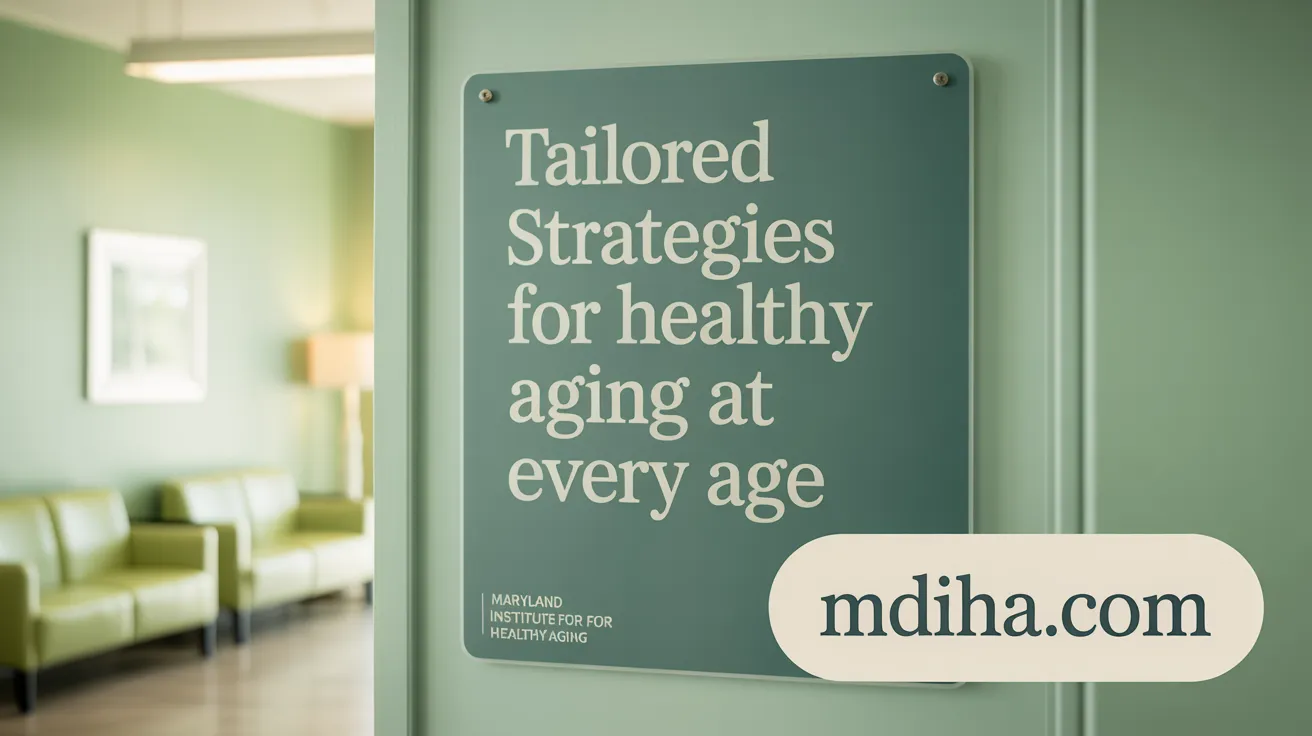
What are the key age-specific tips and strategies for healthy aging across different age groups?
Healthy aging requires tailored strategies that reflect the unique needs of various life stages. In early adulthood, establishing healthy habits such as balanced nutrition and regular exercise sets a foundation for future well-being. As individuals transition into middle age, focusing on maintaining a healthy weight, controlling blood pressure, and managing stress becomes critical. This period often involves addressing emerging health concerns like cholesterol and glucose levels through lifestyle modifications.
In older adulthood, emphasizing physical activity like walking, gardening, or yoga helps preserve strength, balance, and flexibility, reducing fall risks. Nutrient-rich diets enriched with fruits, vegetables, lean proteins, and whole grains support overall health and prevent deficiencies. Cognitive engagement, social participation, and mental health care—such as learning new skills, joining clubs, or volunteering—are vital for maintaining mental acuity and emotional well-being.
Regular health check-ups, vaccinations, and proactive management of chronic conditions help detect health issues early and sustain independence. Supporting environments, including accessible public spaces and healthcare facilities, facilitate active aging and social inclusion.
Why are personalized approaches based on biological, social, and environmental factors important?
Each individual's aging process is influenced by genetics, lifestyle, socioeconomic status, and living conditions. Personalized strategies acknowledge this diversity, ensuring interventions address specific risks and preferences. For example, someone with a family history of heart disease might benefit from earlier screening and targeted dietary changes, while an individual in a low-income setting may require support through community programs.
Considering social factors like social networks and mental health resources is essential for comprehensive care. Environmental modifications, such as home safety assessments or accessible outdoor spaces, further support independence. Tailoring approaches enhances engagement, efficacy, and ultimately, health outcomes.
What role do supportive environments and accessibility play?
Supportive environments are crucial for promoting healthy aging. Well-designed public spaces that are accessible and safe encourage physical activity and social interactions. Features like shaded walking paths, benches, and barrier-free infrastructure help older adults stay active and connected.
Community programs, transportation services, and healthcare facilities focused on age-friendly practices ensure that older adults can access necessary services without undue barriers. Accessibility to affordable healthcare, nutritious food, and social activities mitigates health disparities and fosters a sense of inclusion.
In summary, age-specific strategies that are personalized and supported by accessible, welcoming environments empower individuals to age healthily and gracefully. Integrating biological, social, and environmental considerations creates a comprehensive framework that promotes functional ability, independence, and quality of life at every stage of life.
Lifestyle Habits That Foster Long-Term Health and Well-Being
 Healthy aging is largely supported by several consistent lifestyle habits that promote physical, mental, and social well-being. Engaging in regular physical activity stands out as a cornerstone, including aerobic exercises like walking or biking, strength training, and flexibility routines. These activities help maintain mobility, enhance balance, and reduce the risk of falls, which are common concerns in older adults.
Healthy aging is largely supported by several consistent lifestyle habits that promote physical, mental, and social well-being. Engaging in regular physical activity stands out as a cornerstone, including aerobic exercises like walking or biking, strength training, and flexibility routines. These activities help maintain mobility, enhance balance, and reduce the risk of falls, which are common concerns in older adults.
Eating a balanced, nutrient-dense diet is equally important. The Mediterranean-style diet, rich in fruits, vegetables, whole grains, nuts, seeds, and fish, has been shown to lower the risk of chronic diseases such as heart disease, diabetes, and some cancers. Proper nutrition also supports brain health and immune function, essential for quality aging.
Social engagement plays a critical role in emotional and cognitive health. Maintaining strong relationships with family, friends, and community through regular interactions helps prevent loneliness and depression. Social activities and hobbies foster mental stimulation and purpose, both of which are linked to better health outcomes.
Avoiding harmful habits such as smoking and excessive alcohol consumption can significantly reduce many health risks. Managing stress through techniques like yoga, meditation, and journaling, combined with good sleep hygiene—such as keeping a consistent sleep schedule and creating a restful environment—further enhances overall health.
Finally, routine health check-ups and screening tests are vital. They facilitate early detection and management of chronic conditions, ensuring ongoing health and preventing complications. Combining these habits creates a comprehensive approach to aging well, supporting longevity and a high quality of life.
Nutrition and Hydration: Adapting Dietary Needs Through Aging Stages
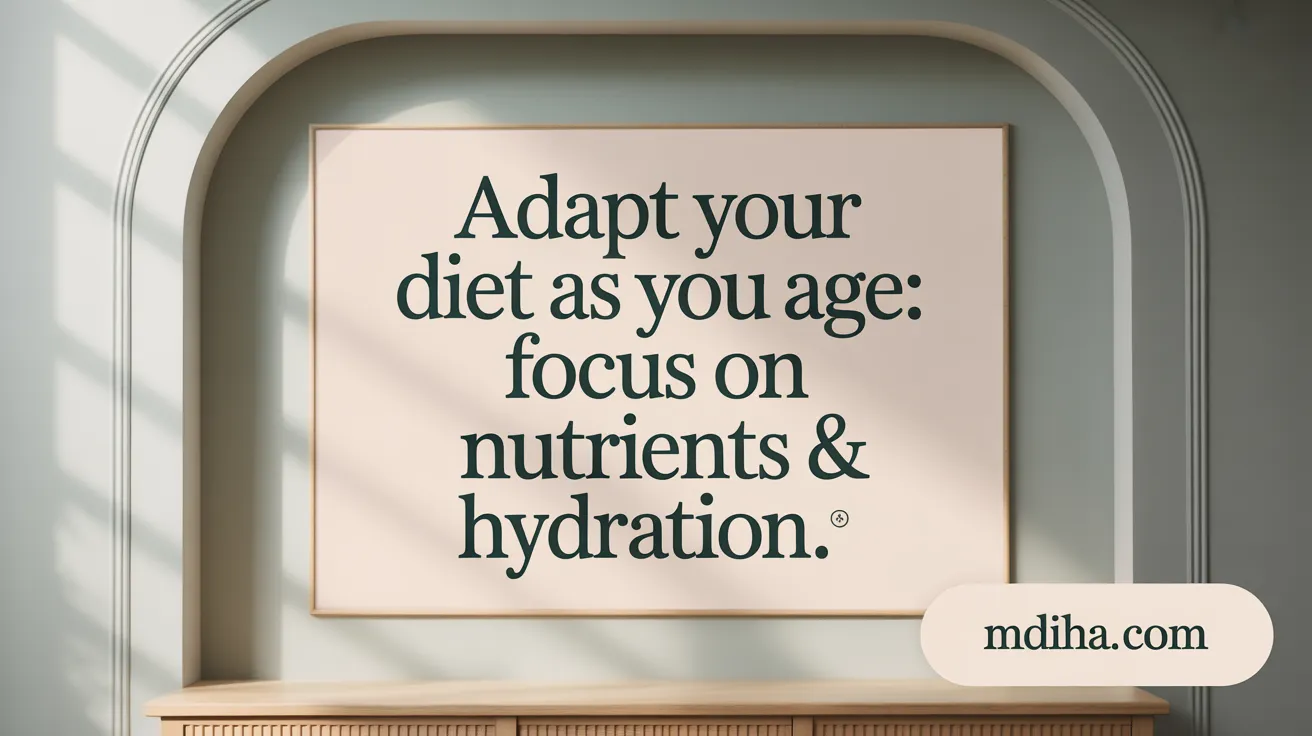 As we progress through different stages of aging, our nutritional intake and hydration strategies must be carefully adapted to support overall health and well-being.
As we progress through different stages of aging, our nutritional intake and hydration strategies must be carefully adapted to support overall health and well-being.
Older adults should focus on nutrient-rich foods like colorful fruits and vegetables, whole grains, lean meats, seafood, dairy, or fortified plant-based alternatives. These foods provide essential vitamins and minerals crucial for maintaining bone density, muscle strength, and cognitive function.
With age, caloric needs generally decline. However, the requirement for specific nutrients increases. Calcium and vitamin D are vital for bone health, with recommended intakes of at least 1,000 mg of calcium daily and 600-800 IU of vitamin D, rising for those over 70. Vitamin B12 and fiber are also essential to prevent anemia and support digestive health.
Hydration becomes even more important as the sensation of thirst diminishes with age. Older adults should aim to drink water, milk, or fortified beverages regularly throughout the day, especially in warmer weather or during illness.
Dietary adjustments should also involve reducing intake of added sugars, sodium, and saturated fats. Limiting processed foods, sugary drinks, and high-sodium snacks helps lower the risk of chronic conditions like hypertension, diabetes, and cardiovascular disease.
Safe food handling is critical to prevent foodborne illnesses, which pose a higher risk for older adults. Proper storage, thorough cooking, and hygiene practices should be emphasized.
Engaging in physical activity and shared social meals can further enhance nutritional benefits, support mental health, and promote functional independence. Tailoring diet and hydration plans to individual health conditions and consulting healthcare professionals ensures optimal nutrition at every age.
Safe and Effective Exercise Guidelines for Older Adults
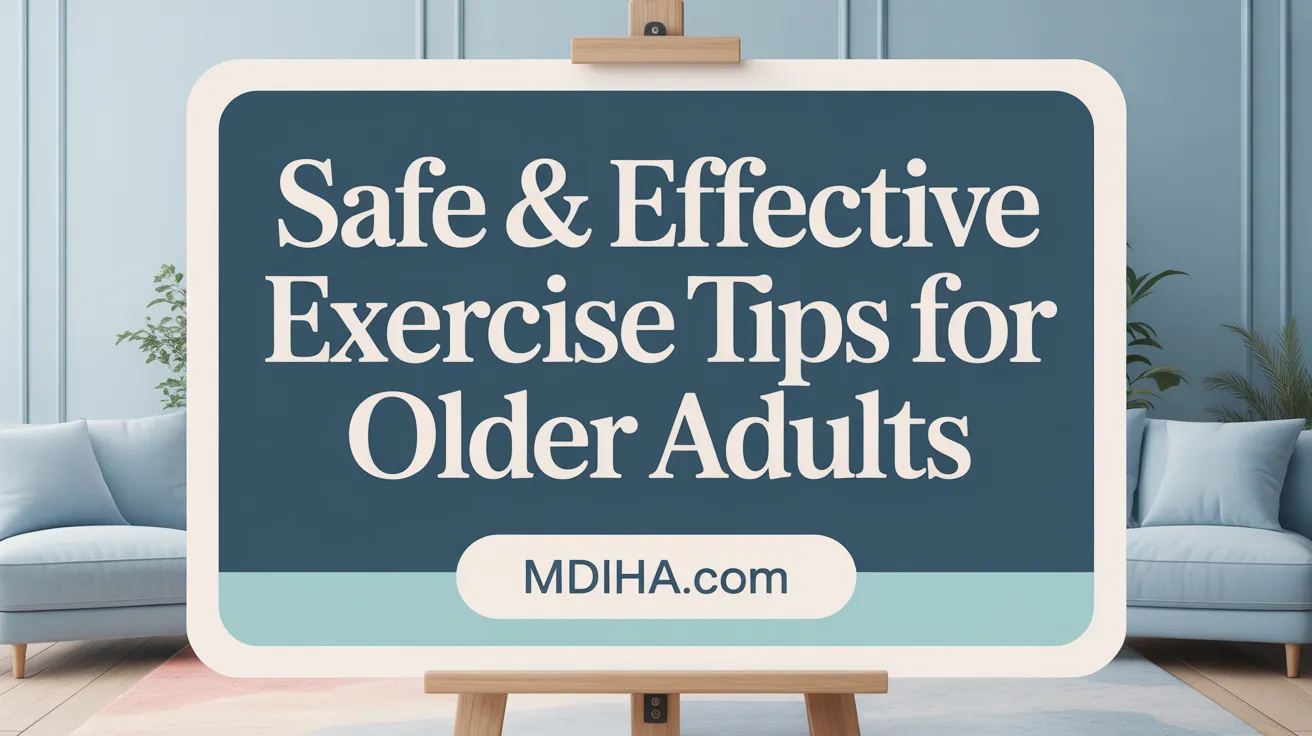
What types of physical activity and exercise are most beneficial and safe for older adults?
Older adults can greatly benefit from engaging in a variety of physical activities that promote strength, flexibility, balance, and cardiovascular health. Recommended types include brisk walking, swimming, cycling, dancing, yoga, and Tai Chi. These exercises not only support overall fitness but also help prevent falls and improve mental well-being. For more information, see Physical Activities for Older Adults and Types of Exercise for Seniors.
Strength training exercises, such as resistance band workouts, light weightlifting, or body-weight exercises, should be performed at least twice a week. These activities help maintain muscle mass, which tends to decline with age, and support independence. Guidance on Strength and Balance Exercises and Muscle-strengthening Activities can be helpful.
Balance activities like heel-to-toe walking or standing on one leg help reduce fall risk and improve stability. Incorporating stretching routines enhances flexibility, which is vital for daily movement and injury prevention. More details on Balance Exercises and Fall Prevention are available.
To ensure safety, older adults should start slowly, especially if they have pre-existing health conditions. It’s advisable to consult healthcare providers before beginning new exercise routines. Choosing enjoyable activities increases adherence and makes exercise more sustainable. Refer to Tips to Boost Your Health as You Age for safety guidance.
Overall, a combination of aerobic, strength, balance, and flexibility exercises provides comprehensive health benefits. Staying physically active supports mobility, cognitive health, and emotional well-being, contributing to a higher quality of life in later years. For a science-based approach, see Live Long & Well: Science-Based Tips for Healthy Aging.
How often should older adults exercise, and how can they start safely?
Older adults are encouraged to aim for at least 150 minutes of moderate-intensity aerobic activity weekly, such as brisk walking or water aerobics. Additionally, including muscle-strengthening and balance exercises twice a week enhances physical function. See Physical Activity Guidelines for Older Adults for detailed recommendations.
Starting safely involves warming up with gentle movements, progressing gradually, and listening to one's body. Using proper footwear, exercising in well-lit, safe environments, and maintaining hydration are essential. Those with chronic conditions or low fitness levels should seek medical advice and possibly begin with low-impact activities or supervised classes. For tips on Starting Physical Activity Safely and Exercise Safety for Older Adults, consult trusted sources.
Engaging in activities like gardening or dancing not only makes exercise enjoyable but also promotes social interaction, further supporting mental health. Learn more about Social Connections and Physical Activity.
By integrating these guidelines into daily routines, older adults can improve their mobility, reduce fall risk, and maintain independence longer. For an overview of Healthy Aging Tips, consider resources from public health organizations.
Search query: safe physical activity guidelines for older adults
(190 words)
Nurturing Mental Health, Cognitive Function, and Social Connections in Aging
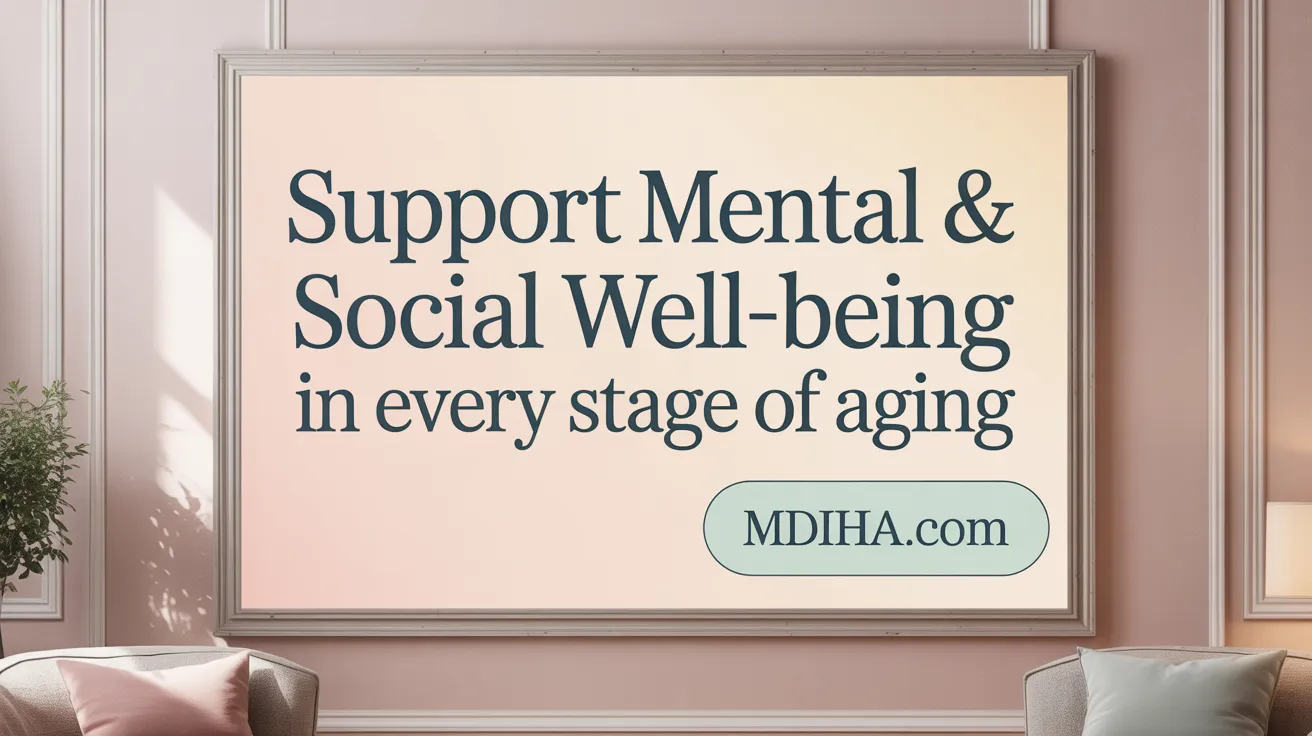
How can mental health, cognitive health, and social engagement be supported during aging?
Supporting mental health, cognitive well-being, and social bonds in later life requires a multifaceted approach rooted in healthy lifestyle habits and systemic support. Regular physical activity, a balanced diet rich in fruits, vegetables, and whole grains, and managing chronic conditions help maintain brain function and emotional stability (Healthy Aging Tips, Healthy Eating for Older Adults).
Encouraging social participation—through community programs, volunteer opportunities, or digital platforms—reduces feelings of loneliness and social isolation. These connections are vital for emotional support and can help prevent depression and cognitive decline (Social Connections for Better Health, Reducing Social Isolation in Older Adults).
Engaging in mental stimulation activities such as puzzles, learning new skills, or hobbies can enhance cognitive resilience and delay age-related decline in memory and thinking skills (Mental Exercises for Aging Well, Brain Exercises to Slow Cognitive Decline).
Building resilience and nurturing optimism play key roles in coping with life changes and health challenges associated with aging. Creating a positive outlook not only improves mental health but also supports physical health (Benefits of Laughter and Play, Positive Lifestyle Choices).
Addressing societal issues, including ageism and elder abuse, is crucial for fostering a respectful environment where older adults feel valued and protected. Healthcare systems that integrate age-friendly policies promote accessibility and personalized care (Age-Friendly Care, Addressing Elder Abuse).
Systemic support through policies that encourage lifelong learning, community engagement, and mental health services further enable older adults to age healthily. Overall, a combination of individual habits, community resources, and supportive policies forms the foundation for nurturing mental resilience, cognitive vitality, and social well-being as we grow older (Lifelong Learning Activities, Community-Based Intervention Guides, Healthy Aging Resources).
Preventive Health Measures, Screenings, and Managing Age-Related Conditions
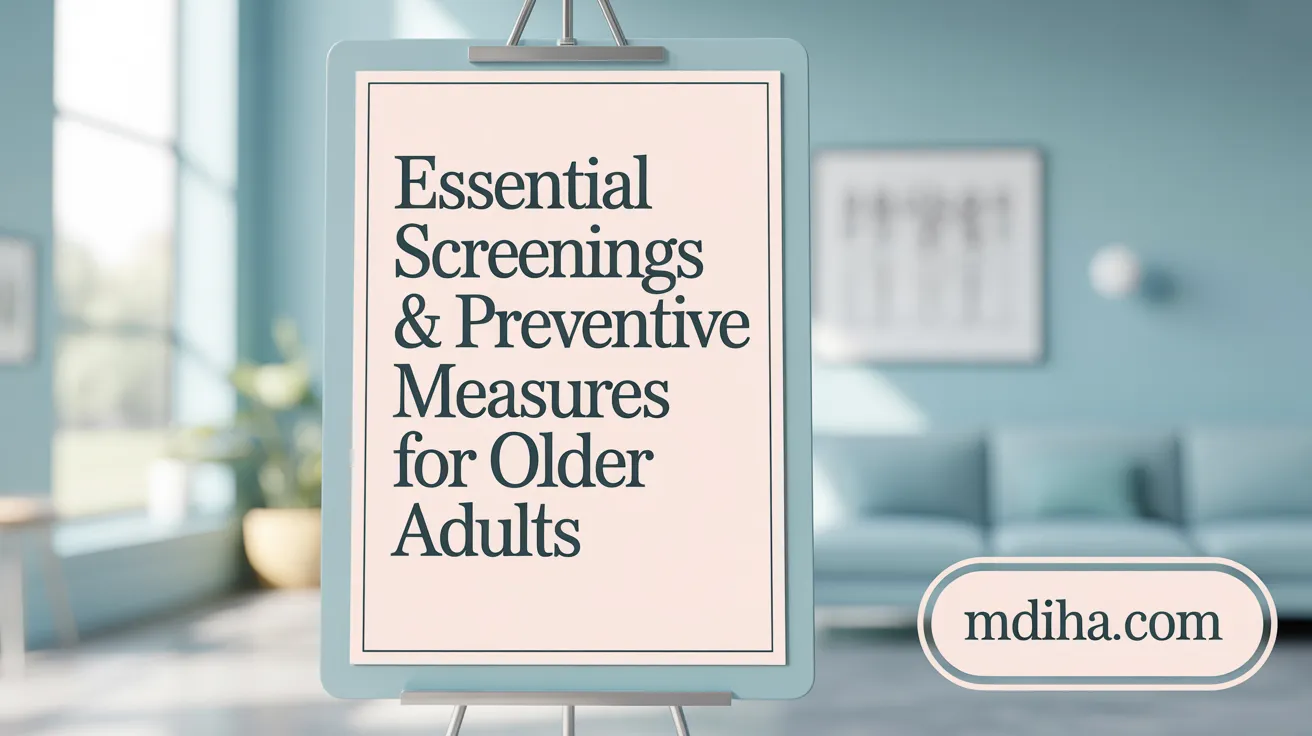
What preventive health measures and screenings are essential for older populations?
Older adults benefit significantly from routine preventive health measures and screenings tailored to their unique needs. Regular screening for hypertension, high cholesterol, and diabetes is crucial for early management of these chronic conditions, which are prevalent with aging. Cancer screening programs, such as mammograms for women aged 40 to 74 and colorectal cancer screenings beginning at age 50, help detect cancers early when treatment is most effective. Women over 65 should also consider osteoporosis screening to prevent fractures, and men aged 65-75 who have smoked should be assessed for abdominal aortic aneurysm. Vision and hearing tests should be conducted as needed to address sensory impairments, which can impact safety and independence.
Vaccinations form an integral part of preventive care. Annual influenza vaccines, pneumococcal vaccines, and shingles vaccines help protect against serious illnesses. Lifestyle factors like tobacco cessation, a balanced diet, and regular physical activity further enhance health outcomes.
Screening strategies should be individualized based on each person’s health status, risk factors, and life expectancy, ensuring that preventive interventions are appropriate and beneficial. For further details on maintaining physical health and health screening recommendations, see CDC Healthy Aging.
How should common age-related health conditions be addressed and health risks managed?
Managing age-related health conditions effectively involves a comprehensive and proactive approach. Sensory impairments, such as hearing and vision loss, can be mitigated with devices like hearing aids and procedures like cataract surgery to preserve quality of life and safety. Learn more about eye and ear care in aging.
Chronic diseases, including cardiovascular diseases, diabetes, osteoarthritis, and osteoporosis, require tailored management plans that combine lifestyle modifications—such as diet, exercise, and weight management—with appropriate medications. Regular monitoring allows for adjustments in treatment to maintain control and prevent complications. More on managing these conditions is available in Healthy Aging Strategies.
Fall prevention is a priority; strength and balance exercises, hazard reduction in the home, and addressing issues like dizziness or muscle weakness are vital to avoid injuries. Ensuring vaccinations are up-to-date further reduces the risk of infectious diseases. Detailed fall prevention tips are provided by the National Council on Aging.
Addressing mental health is equally important. Supporting social engagement, managing polypharmacy issues, and providing access to mental health services can help prevent depression and cognitive decline. For evidence-based approaches on mental well-being and cognitive health, see Science-Based Tips for Healthy Aging.
By integrating these strategies into routine healthcare, older adults can better manage their health, reduce risks, and maintain independence and well-being as they age. Additional comprehensive resources on healthy aging can be found through the National Institute on Aging and the World Health Organization’s fact sheet on Ageing and Health.
Age-Friendly Healthcare and Policy Frameworks Supporting Older Adults
 The foundation of supporting healthier aging lies in effective healthcare practices and policies that are tailored specifically for older adults. Central to this approach is the '4Ms' framework—What Matters, Medication, Mentation, and Mobility—which ensures care is personalized and respects the individual preferences and needs of older patients. This model emphasizes understanding each person's priorities, managing medications carefully to minimize side effects and interactions, screening for mental health issues like dementia and depression, and promoting safe movement through mobility support.
The foundation of supporting healthier aging lies in effective healthcare practices and policies that are tailored specifically for older adults. Central to this approach is the '4Ms' framework—What Matters, Medication, Mentation, and Mobility—which ensures care is personalized and respects the individual preferences and needs of older patients. This model emphasizes understanding each person's priorities, managing medications carefully to minimize side effects and interactions, screening for mental health issues like dementia and depression, and promoting safe movement through mobility support.
Implementation of 'Age-Friendly Health Systems' is gaining momentum across care settings, including hospitals, clinics, and long-term care facilities. For example, VA facilities and academic health institutions like the University of Utah have adopted these practices, resulting in reduced harm, improved safety, and better health outcomes. These systems require collaborative efforts that extend beyond healthcare providers, involving policy reforms that encourage systemic changes, such as safe transitions from hospital to home and reducing unnecessary hospital stays.
In addition to healthcare system reforms, 'multisector planning' plays a vital role in creating environments that support aging in place. This involves cross-sector strategies that include housing, transportation, social services, and community infrastructure, all designed with an equity lens to address disparities among older adults. The development of inclusive policies requires engaging stakeholders—older adults, caregivers, community organizations, and policymakers—to ensure that services are accessible, culturally appropriate, and responsive.
Combatting pervasive 'ageism' is crucial to realizing equitable care. Educational campaigns, societal attitude shifts, and legal reforms help dispel stereotypes about aging, promoting respect and dignity in health interactions. Policies backed by data and community input foster environments where older people can live independently and participate actively in society.
Public health initiatives such as 'Healthy People 2030' and the 'UN Decade of Healthy Ageing' exemplify comprehensive frameworks that set measurable goals for aging well. These programs emphasize improving physical activity, vaccination rates, and social engagement, while monitoring progress through data portals and indicators. Supportive environments and community resources, including accessible public spaces, home modifications, and community programs, are essential in helping older adults maintain independence.
In summary, the integration of evidence-based practices like the '4Ms', implementation of age-friendly health systems, multisector planning, and fostering societal respect for aging are all critical to creating an equitable, supportive landscape for older adults. These efforts aim not only to improve health outcomes but also to uphold the dignity, independence, and quality of life of aging populations worldwide.
Cultivating Health and Vitality Through the Aging Journey
Healthy aging is a multifaceted journey that benefits greatly from tailored strategies addressing physical, nutritional, mental, and social needs across life stages. Embracing a nutrient-rich diet, consistent physical activity, proactive health management, and robust social connections facilitate resilience and independence. Age-friendly healthcare practices and supportive community environments are essential to optimize well-being and enhance quality of life. By integrating evidence-based lifestyle habits, preventive care, and inclusive policies, society can empower individuals to age with dignity, purpose, and vitality.
